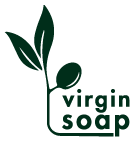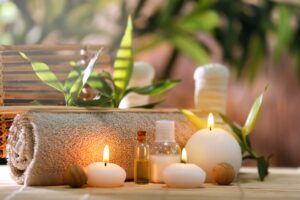Did you know that hygiene wasn’t always the primary reason for bathing and cleansing in the ancient world? When early civilisations dunked in a river or stood under a waterfall, it wasn’t so much to get clean but a case of following the social, religious and therapeutic rituals of the time.
The Romans, for instance, among the pioneers of indoor plumbing and the ultimate bathing experience, installed highly sophisticated public baths more for recreational and health purposes then hygiene. Hot and cold public baths, complete with games and exercises while people socialised, were the order of the day in ancient Rome. The Greeks, back in 2500 BCE, believed that cold baths toned their bodies. Whilst today cold baths are a growing trend. People also rubbed themselves with olive oil and removed it with a mini rake rather than soap and water.
The Greeks also engineered some technologically advanced plumbing systems that directed hot and cold water into their baths. They invented the precursor of today’s showers. Ancient Egyptians, Romans and Greeks also bathed for restoring health. In Asian cultures, bathing in rivers was linked to healing diseases. Even today, Hindus seek out the holy rivers to cure themselves.
However, cleanliness was not an alien concept to the ancients. It was regarded as next to godliness. In 2500 BC, in the Indus valley in Pakistan, a sacred site called The Great Bath was devoted to bathing. Bathing was also a religious ritual. Judaism, Hinduism, Islam and Buddhism incorporate cleansing rituals as a symbol of spiritual purification.
As the Roman Empire declined and the aqueducts fell into disrepair, the Byzantine and Turkish baths came into vogue. They were places of beauty, with colourful tiles and artwork adorning bathing spaces.
In Europe, the plague or Black Death in the mid 1300s brought about an end to bathing, as people bought into the idea that clean pores attracted the disease. People went around unclean. Perfumes were commonly used to stem the smell of body odours.
In the mid-18th century, the first public baths opened in Liverpool, England , as people became more conscious of health and hygiene. A modern version of the old Roman and Turkish baths began to emerge.
It was not until one hundred years ago that that bathing regularly became common. Initially, water was not accessible easily in many parts of the world. It was mainly the rich who could afford to bathe. In the west, where there ware indoor tubs, there was also an hierarchy with the father bathing first and the rest of the family using the same water afterwards. In many parts of the world, people bathed in rivers and seas.
Bathroom as a necessity
In today’s world, almost every home has a bathroom with running water and bathing frequently, if not every day, is the norm. However, social bathing is still part of some cultures. In Turkey, there are the hammams where even celebratory events take place. In Japan, the Onsens or natural hot springs, created by volcanic activity, are places of social gathering or sacred bathing sites. The Finns share communal saunas.
The bathroom is increasingly viewed as a sanctuary. Home spas are popular, mainly with women, who use them as stress busters or for plain relaxation. Gorgeous smelling candles and diffusers all add to an atmosphere of chilling, peace and tranquillity.
The evolution of soap
Every time we lather ourselves with a beautiful bar of sweet smelling soap, how aware are we of the impressive lineage going back thousands of years? Alongside bathing , the use of soaps always featured in ancient times, albeit in rudimentary forms. 4,500 years ago, a tablet on soap making dating back 4,500 years, detailing the washing of wool with soap, was found in the Sumerian city of Girsu, now southern Iraq. Even today the fatty constituents of lanolin in wool are washed by soapy water.
Artefacts resembling soap, dating from around 2,5000 BCE, with recipes to make them, have been traced back to ancient Babylon. Fat and ashes were among the original ingredients that went into soap making. In biblical times, people used clay, pumice, ash and oil to clean their bodies.
One cannot mention soap without referring to the original castile soap from the ancient Syrian city of Aleppo. Allepo soap, made from Olive Oil, Sweet Basil oil and water mixed with Hydrogen peroxide, was one of the most important items traded along the Silk Road that bridged East and West. The soap was cured for seven months, during which time it turned from green to brown. Not much has changed in the process of soap making today, with castile soap still being considered high quality, natural and biodegradable.
Once soap was introduced to Europe, it brought about a new awareness of sanitation; people started cleaning themselves and their clothes with the intension of warding off illness and diseases. Soap making was initially centred around the Mediterranean cities of Italy and Spain, with their ample supply of olive oil. Soap was exported around Europe, and around 1500 it arrived in England. Germany is credited with inventing the first synthetic detergent during the First World War.
Soap Today
Every household uses soap in some form or the other. In the last two years, since covid, cleansing ones hands became paramount like no time before and it became a global ritual.
Artisanal soap makers still use the old cold pressed, saponification method of mixing oils or fats with lye (a hydroxide compound). From simple castile soaps to multi ingredient varieties, we enjoy a limitless array of washing bars, liquids or gels, that serve innumerable needs -exfoliation, moisturising, anti-fungal, calming.
Restorative Effects of Baths
Today, luxury bathrooms and spas have us enjoying bathing and cleansing as desirable experiences. We have ample opportunity to bathe like the ancient Romans and reap the benefits. There are numerous studies of the benefits of bathing on psychological and physical health, such as reduction in stress and depression, and lower incidence of heart disease and stroke.
Some well-documented essential oils such as Lavender and Chamomile enhance the therapeutic value of baths, offering calm and peace, while Epsom salts and rosemary are popularly used to soothe aching muscles and joints. For those with showers, some essential oil on the floor of the shower offers similar benefits.
Follow in the footsteps of our ancestors with a healing and energising bath. Unwind with your favourite bath products and emerge from your bathroom feeling invigorated and uplifted, ready to face the next moment.

